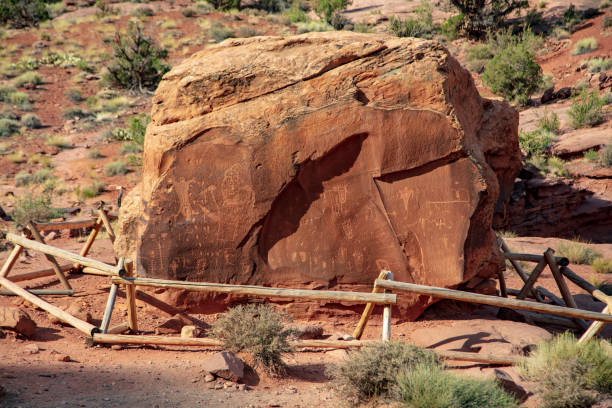Table of Contents
Sego Canyon is a fascinating place to visit for anyone interested in ancient rock art and history. Located north of Thompson Springs, Utah, Sego Canyon contains petroglyphs and pictographs created by three different cultures: the Archaic, the Fremont, and the Ute. These rock art panels date back from 8,000 years ago to the 18th century and depict various scenes of hunting, warfare, religion, and mythology.
In this article, I will share my experience of exploring the Sego Canyon petroglyphs and rock art, and provide some tips on how to get there and what to see.
How to Get to Sego Canyon?
Sego Canyon is easy to access from Interstate 70, about three hours east of Salt Lake City. I took the Thompson Springs exit (187) and followed Thompson Canyon Road through the town until I reached Sego Canyon Road. Then I drove north for about one-tenth of a mile to the parking lot, where I could see some rock art panels on the western and northern walls. There is a sign with some information about the site and a trail that leads to more panels further up the canyons of the ancient.
What to See in Sego Canyon?
The first thing that caught my eye was a large panel of pictographs on the western wall. Pictographs are paintings made with natural pigments on rock surfaces. This panel was created by the Archaic people, who lived in the area from 8,000 to 2,000 years ago. They were nomadic hunter-gatherers who left behind some of the oldest and most mysterious rock art in North America.
The Mysterious Archaic Pictographs
The pictographs in this panel show life-sized figures with elaborate headdresses, antennae, earrings, and body decorations. Some of them have animal or bird-like features, such as wings, claws, or beaks. Some scholars believe that these figures represent shamanic visions or supernatural beings.
Northern Wall Fremont Treasures
The next panel I saw was on the northern wall, near the parking lot. This panel was made by the Fremont people, who lived in the area from 600 to 1,300 AD. They were farmers who grew corn, beans, and squash and also hunted and gathered wild foods. They left behind distinctive rock art that shows geometric shapes, animal motifs, and human figures with trapezoidal bodies, large eyes, and elaborate headdresses. The Fremont rock art often reflects their complex social and religious systems.

The Petroglyphs of the Utes: A Look at Nomadic Life
As I followed the trail up the canyon, I came across more panels of petroglyphs and pictographs on both sides of the walls. Petroglyphs are carvings made by pecking or scratching the rock surface with a stone or metal tool. These panels were made by the Ute people, who lived in the area from the 14th century to the present day. They were nomadic hunters who followed the seasonal migrations of bison, deer, and elk.
They also traded with other tribes and Europeans who arrived in the region. Their rock art shows scenes of hunting, warfare, horse riding, and ceremonial activities. Some of their petroglyphs are painted with red pigment, creating a striking contrast with the dark rock.
Conclusion
I spent about an hour exploring the Sego Canyon petroglyphs and rock art, and I was amazed by the diversity and beauty of these ancient artworks. They gave me a glimpse into the lives, beliefs, and cultures of the people who inhabited this land for thousands of years. I also learned about the history of Sego Canyon, which was once a coal mining town that became a ghost town after the mine closed in 1955. There are some ruins of buildings and machinery that can be seen along the road.
If you are looking for a unique and rewarding adventure in Utah, I highly recommend visiting Sego Canyon and seeing its petroglyphs and rock art for yourself. You will not regret it!
